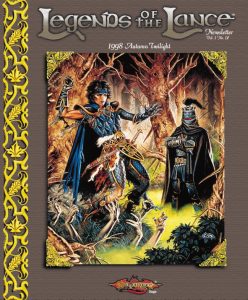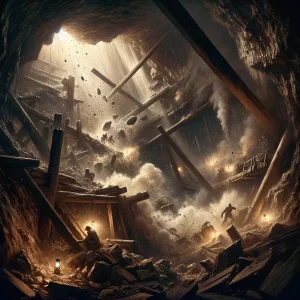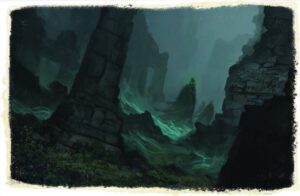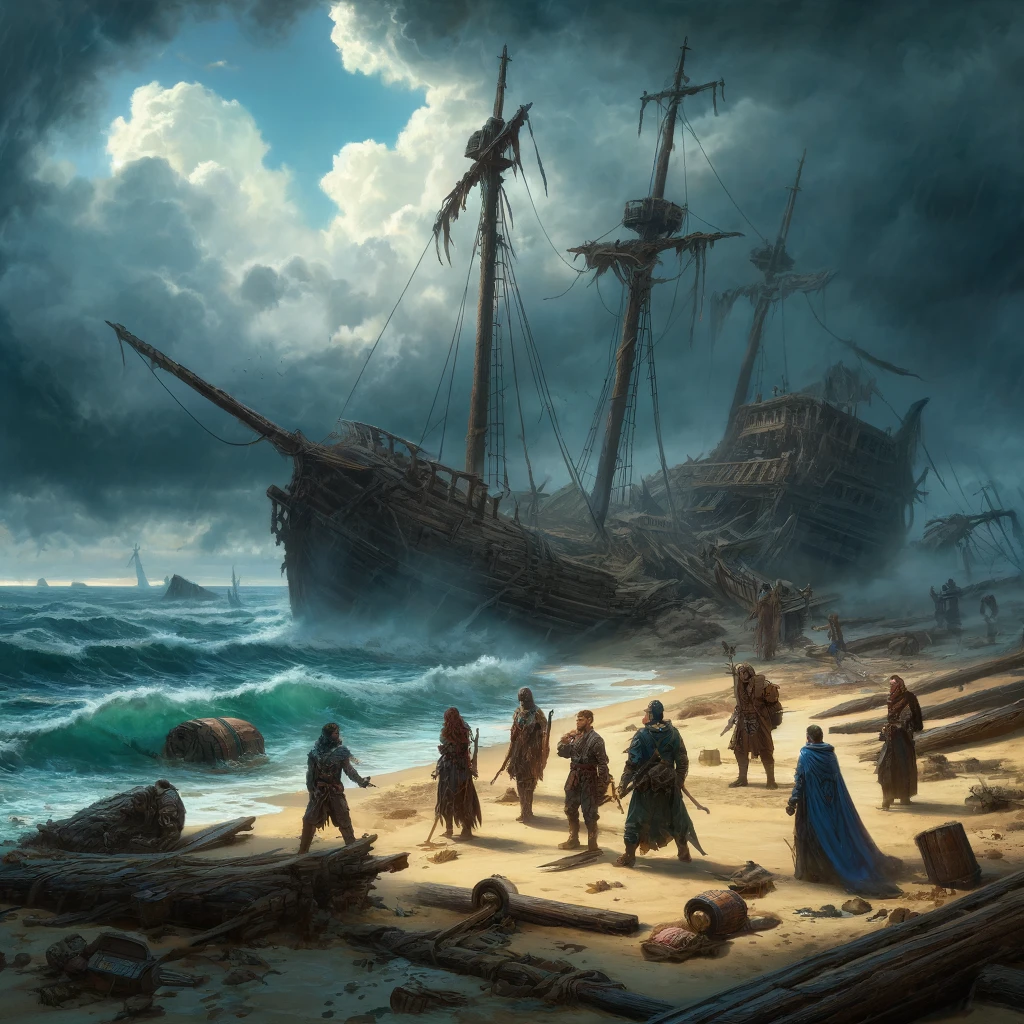
Introduction to "Treasure Hunt"
In the realm of tabletop RPGs, "Treasure Hunt" stands out as an intriguing adventure designed for Dungeons & Dragons. It guides a Dungeon Master (DM) and four to six 0-level characters through an exhilarating scenario that deviates from traditional high-fantasy role-playing norms. Unlike typical adventures where characters begin with a set of skills or magical abilities, "Treasure Hunt" places participants in the shoes of ordinary individuals-each character is as common as the villagers or townsfolk usually found milling in the background of grander narratives.
The Premise: Starting from Zero
The adventure commences with a gripping narrative hook: characters are captives on a slaver ship caught in a tempestuous storm, leading to a shipwreck on an uncharted island. Stripped of all but their essential human capabilities, players must navigate a series of challenges and hostile encounters to survive and evolve into the iconic adventurer archetypes of D&D or Pathfinder.
This foundational experience is both humbling and exhilarating, offering a fresh perspective on character development and a deeper appreciation for the growth that traditional classes undergo. "Treasure Hunt" is not just about battling monsters and finding treasure; it's an exploration of what makes a hero and how ordinary individuals can rise to extraordinary occasions.
Adapting "Treasure Hunt" for D&D 5e and Pathfinder
While originally crafted for Advanced Dungeons & Dragons (AD&D), "Treasure Hunt" can be seamlessly adapted to fit both D&D 5th Edition (5e) and Pathfinder. These newer systems offer streamlined mechanics that can enhance the narrative and gameplay of this adventure.
- Character Zero-Level Mechanics: Both D&D 5e and Pathfinder have robust rules that can accommodate the concept of 0-level play. For D&D 5e, consider simplifying character sheets and delaying class selection until specific milestones in the adventure are met. Pathfinder players might utilize the "Background" system more extensively to represent their pre-adventurer lives, with skills and traits that influence their survival strategies on the island.
- Skill Challenges: The flexibility of the 5e and Pathfinder systems allows for a more nuanced approach to skill checks and interactions. Use these to heighten the drama as players use mundane skills to overcome extraordinary challenges, such as building rafts, setting traps, or navigating the treacherous terrain of the island.
- Combat and Encounters: Adapt the combat encounters to fit the balanced mechanics of 5e or Pathfinder, ensuring that they remain challenging but fair for characters who have not yet chosen a class. This can involve modifying enemy stats or the conditions of combat to align with each system's dynamics.
- Choices: Both systems support complex character alignments and decisions that can influence the narrative. "Treasure Hunt" provides numerous opportunities for characters to make choices that will affect their alignment and future as adventurers, deeply integrating with the moral frameworks of 5e and Pathfinder.
Adapting the "Treasure Hunt" adventure for D&D 5e and Pathfinder 2e involves tweaking mechanics to align with the nuances of each system while maintaining the thematic core of starting as zero-level characters and building towards a traditional class-based RPG. Here's how you can specifically adjust the adventure for these newer editions:
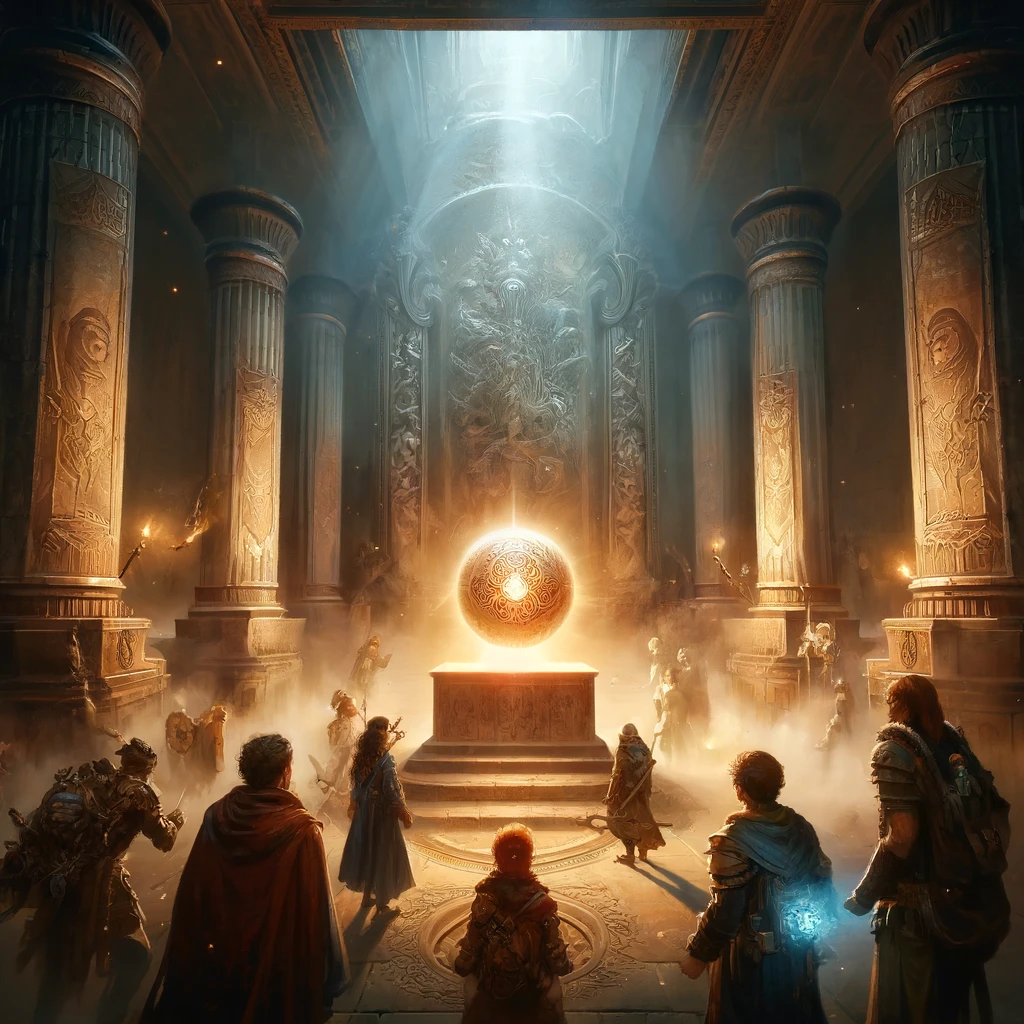
For Dungeons & Dragons 5e
- Character Creation:
- Start characters without a class. Instead of selecting a class, players begin with a background that reflects their character's life before adventuring. This can provide them with skill proficiencies and a minor feature but no class-specific abilities.
- Use standard ability score generation but delay class-related features and abilities until characters perform actions that lead to class selection.
- Hit Points:
- All characters start with a fixed amount of hit points, reflective of commoner stats, like 4 hit points plus their Constitution modifier. This approach keeps the stakes high and emphasizes the peril of their situation.
- Progression to Level 1:
- Characters evolve into their chosen class based on their actions during the adventure. For instance, a character frequently engaged in melee might gravitate towards Fighter, while one who studies a found spellbook might lean towards Wizard.
- Implement milestone leveling where characters reach level 1 at a significant narrative point, perhaps after surviving a key challenge or making crucial decisions that reflect their budding class identity.
- Skill and Ability Checks:
- Leverage the simplified skill system of 5e, emphasizing ability checks. Allow players to use proficiency bonuses only if it makes sense narratively (e.g., using a background-related skill).
- Combat and Encounters:
- Modify enemy stats to ensure that combat remains challenging but doable for characters without class abilities. Consider using the stats for weaker creatures or applying debuffs to enemies to simulate less lethal encounters.
- Use environmental challenges and non-combat resolutions as major components of encounters to emphasize survival and ingenuity.

For Pathfinder 2e
- Character Creation:
- Similar to 5e, begin with no class. Use the extensive background system in Pathfinder 2e to provide skills and a minor ability reflective of their previous life.
- Characters might have "Ancestry" abilities but should start without class features, gaining these as they make choices that align with specific Pathfinder classes.
- Hit Points and Survival:
- Start with minimal hit points based on their ancestry or background, not a class.
- Introduce survival mechanics explicitly, considering Pathfinder 2e's detailed rules on sustenance, rest, and healing.
- Skill System:
- Pathfinder 2e has a robust skill system with various levels of proficiency. Use these to simulate character growth, starting from "untrained" in most skills, moving up to "trained" as they practice and succeed in relevant tasks.
- Progressive Class System:
- Allow characters to earn class features gradually. For instance, after successfully casting a significant spell from a found scroll, a character could unlock the ability to cast a few basic spells of a chosen class.
- Use the three-action economy of Pathfinder 2e to encourage tactical thinking even without full class abilities.
- Combat Adjustments:
- Scale down the complexity of combat encounters to match the capabilities of 0-level characters. Employ simplified versions of creatures or adjust their stats to reflect less dangerous versions.
- Incorporate critical successes and failures as a way to highlight the harshness of their learning curve and the perilous nature of their environment.
General Tips for Both Systems
- Narrative Focus: Keep a strong narrative focus. Let the story and character decisions drive the evolution into traditional class roles.
- Adaptability: Be flexible with how quickly characters adopt class features based on their actions. Some might naturally lean into a class faster than others based on their choices.
- Guided Discovery: Help guide players towards class features by introducing elements or challenges that can only be solved by adopting certain class abilities, encouraging organic growth and learning.
Adapting "Treasure Hunt" for these systems not only refreshes the adventure but also provides a rich, developmental experience that emphasizes character growth, survival, and the consequences of choices in a high-stakes environment.
Why You Want to Play "Treasure Hunt"
"Treasure Hunt" is more than just an adventure; it's a foundational experience that tests and builds the very essence of role-playing. Here's why it is a must-play:
- Character Development: Starting as a 0-level character allows players to truly craft and grow their roles from the ground up, providing a rewarding arc that is often missed in quicker-paced campaigns.
- Versatility and Adaptability: The adventure is easily adaptable to different systems, allowing DMs to incorporate familiar elements from both D&D 5e and Pathfinder.
- Engaging Storyline: The narrative of survival, growth, and ultimate escape offers a compelling framework that is ripe with tension and excitement.
- Educational for New Players: It's an excellent way for newcomers to learn the mechanics of RPGs in a high-stakes yet controlled environment.
- Fresh Challenge for Veterans: Seasoned players will find the restrictions of initial powerlessness a novel challenge, pushing them to think more creatively and strategically.
"Treasure Hunt" is an exceptional adventure that turns the traditional power fantasy of Dungeons & Dragons and Pathfinder on its head, providing a unique starting point that challenges and rewards in equal measure. Whether you are new to tabletop RPGs or looking for a different kind of adventure, "Treasure Hunt" promises not just to entertain, but to transform how you view the role of a hero in the fantastical worlds of D&D and Pathfinder.


